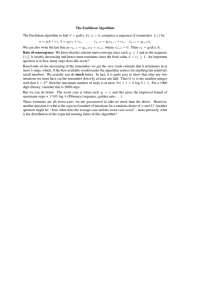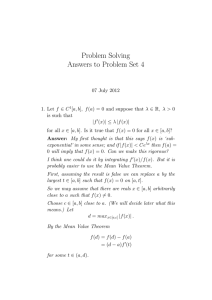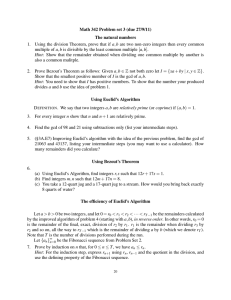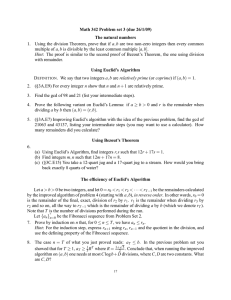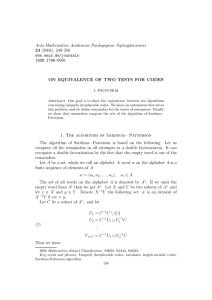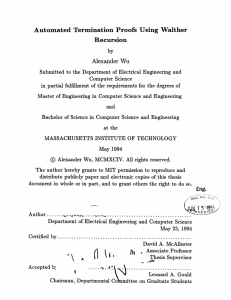Exercise 1.5
advertisement
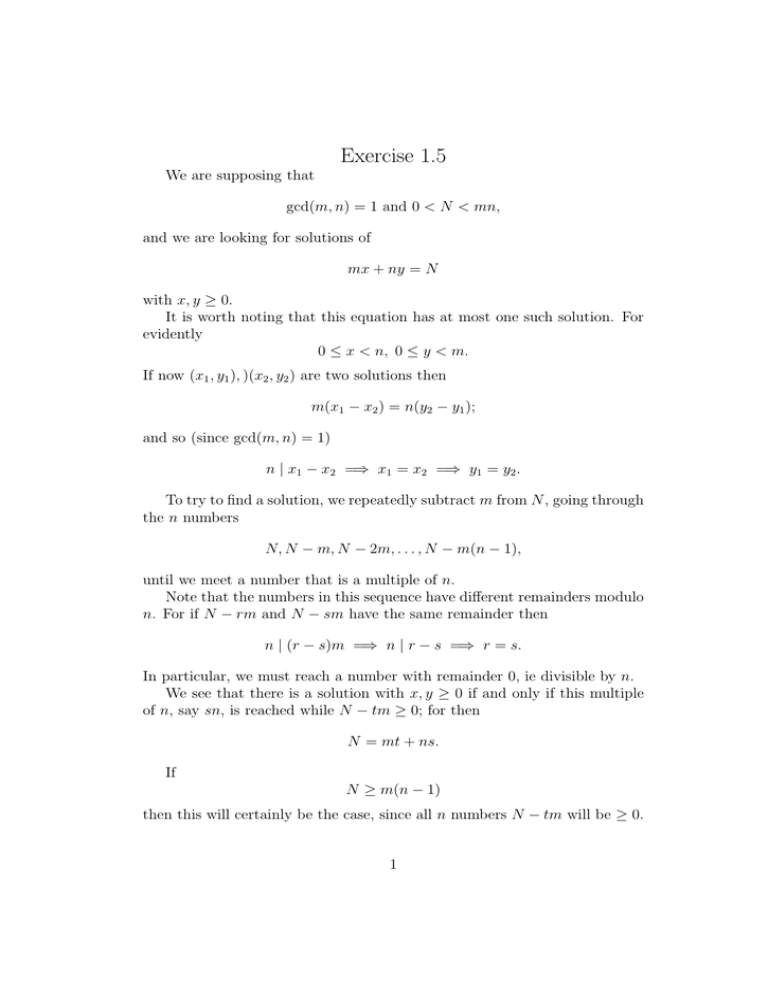
Exercise 1.5 We are supposing that gcd(m, n) = 1 and 0 < N < mn, and we are looking for solutions of mx + ny = N with x, y ≥ 0. It is worth noting that this equation has at most one such solution. For evidently 0 ≤ x < n, 0 ≤ y < m. If now (x1 , y1 ), )(x2 , y2 ) are two solutions then m(x1 − x2 ) = n(y2 − y1 ); and so (since gcd(m, n) = 1) n | x1 − x2 =⇒ x1 = x2 =⇒ y1 = y2 . To try to find a solution, we repeatedly subtract m from N , going through the n numbers N, N − m, N − 2m, . . . , N − m(n − 1), until we meet a number that is a multiple of n. Note that the numbers in this sequence have different remainders modulo n. For if N − rm and N − sm have the same remainder then n | (r − s)m =⇒ n | r − s =⇒ r = s. In particular, we must reach a number with remainder 0, ie divisible by n. We see that there is a solution with x, y ≥ 0 if and only if this multiple of n, say sn, is reached while N − tm ≥ 0; for then N = mt + ns. If N ≥ m(n − 1) then this will certainly be the case, since all n numbers N − tm will be ≥ 0. 1 But we can go further. If N − tm < 0 the first time a multiple of n is encountered, then we must have N − tm = −n. It follows that N − (n − 1)m ≤ −n. ie N ≤ (n − 1)m − n = mn − (m + n); and we see that for this value of N there is no solution with x, y ≥ 0. We conclude that the greatest number N not expressible in the form N = mx + ny is N = mn − (m + n). For suppose there are two solutions, We can suppose that x1 <= x2 . Then mx1 + ny1 = N = mx2 + ny2 , and so m(x2 − x1 ) = n(y1 − y2 ). Since gcd(m, n) = 1 it follows that n | x2 − x1 . But x1 , x2 < n. It follows that x1 = x2 and so also y1 = y2 . Of course there may be no solution, eg if r = 1 and m, n ≥ 2 then there is obviously no solution. On the other hand, suppose m < n and suppose m(n − 1) ≤ N < mn. Then we can find a solution as follows. Subtract m repeatedly from N , to give the n numbers N, N − m, N − 2m, . . . , N − m(n − 1). These numbers all have different remainders mod n. For suppose N −rm, N − sm have the same remainder. Then n | m(r − s) =⇒ n | r − s, which is impossible unless r = s since 0 ≤ r, s < n. It follows that one of these numbers, say N − rm, has remainder 0, ie N − rm = nq =⇒ N = mr + nq. 2


